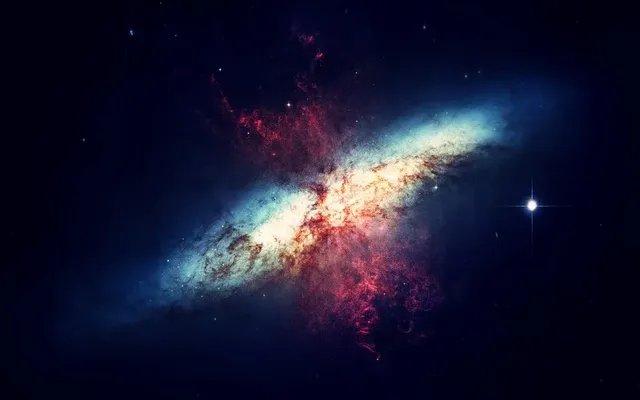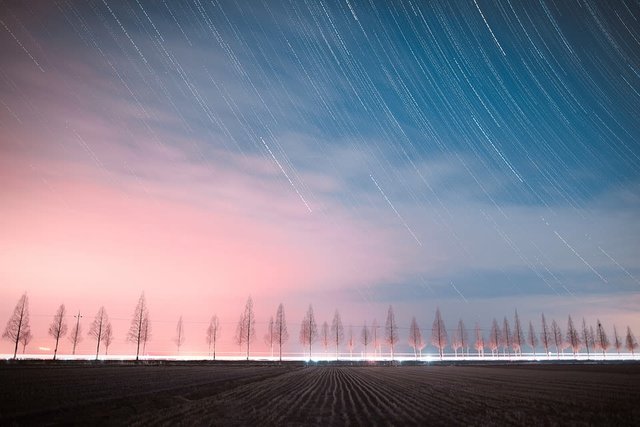Birth, Life and Death of a Star

A few years ago, I became interested in astronomy. I was amazed to realize how dynamic space is and how diverse the celestial bodies are. Stars are fascinating to me. Stars that do not look very different from each other when viewed with the naked eye have different stories.
In this article, I will try to give information about how stars are born and developed and what they turn into after they die.
I will summarize many life events of stars below, such as nebula formation, star birth, star main sequence, and death.
NEBULA
A nebula can be described as a type of cloud composed of hydrogen and dust. Nebulae are the birthplaces of stars. There are different types of nebulas. Emission nebulae such as the Orion Nebula are bright because they are illuminated by the stars that have formed within them. In a reflection nebula, starlight is reflected from dust grains inside the nebula. Dark nebulas are dense molecular hydrogen clouds that partially or completely absorb the light of the stars behind them. The Planetary Nebula is the outer layer of a star that disappeared by transforming from a red giant to a white dwarf.
STAR
A star is a luminous sphere of gas that produces its own heat and light through nuclear reactions. They arise from nebulas and consist mostly of hydrogen and helium gas. Surface temperatures range from 2000 ℃ to 30,000 °C, and their colors range from red to blue-white. The brightest stars are 100 times brighter than the sun and emit as much light as millions of Suns. All the stars we see in the sky with the naked eye are larger or brighter than the sun.
The least shining stars are red dwarfs, emitting less than a thousandth of the sun's luminosity.
The smallest possible mass for a star is about 8% of the sun. Otherwise, nuclear reactions would not occur under the influence of gravity. Objects with less than critical mass shine less and are called brown dwarf or a large planet.
Towards the end of its life, a star like the Sun becomes a red giant before losing its outer layers and finally becoming a white dwarf.
RED GIANT
Red giants are large, bright stars with relatively hot surfaces. They are formed during the final stages of a star's evolution because the hydrogen fuel in the star's center is depleted. Red giants are 10 to 100 times the diameter of the Sun. Although the surface temperature is lower than the sun (about 2000-3000 ℃), they are very bright because they are so large.
Huge red giants are often called supergiants. These stars have diameters of up to 1,000 times that of the Sun and usually emit 1,000,000 times more light than the sun.
RED DWARF
They are relatively warm, pale, and small stars, with a size of about a tenth of the mass of the sun. 70% of the stars in the universe are red dwarfs. It is estimated that they can have a lifespan of 100 billion years because they burn so slowly.
Our universe is 13.7 billion years old. It is estimated that the sun will continue to exist for another 5 billion years. It is speculated that when the Sun and other relatively large stars like it fade, humanity may migrate to a planet orbiting a red dwarf.

YELLOW DWARF
It is the name given to the class of stars that includes the Sun. Yellow dwarfs are also called G-type dwarfs. They have 0.84 to 1.15 times the mass of the sun. Surface temperatures range from 5027 to 5727 degrees Celsius. Like other medium-sized stars, they convert hydrogen and helium into energy through nuclear fusion. Yellow dwarfs make up 7.6% of all main-sequence stars.
WHITE DWARF
This tiny, hot star is the final stage in the life cycle of a sun-like star. White Dwarfs have a mass similar to the sun, but only 1% of the sun's diameter. (Approximately the diameter of the Earth). A white dwarf has a surface temperature of 8000℃ or more, but its overall luminosity is less than 1% of the sun because they are smaller than the sun.
White Dwarfs are shrunken remnants of stars that have used up their nuclear energy sources. A white dwarf is made up of condensed matter due to gravitational effects. A spoonful of white dwarf mass weighs several tons. White Dwarfs cool and wither in a few billion years.
SUPERNOVA
A star explodes to achieve the brightness of the 100 million suns for a short period of time during its death, illuminating almost the entire galaxy. There are two types of supernovas:
Type I supernovas occur in binary star systems where gas from a star combines with a white dwarf and causes it to explode.
Type II supernovae result from internal nuclear reactions at the end of the life of stars ten times or larger than the sun. These explosions leave behind neutron stars and black holes. Supernovas are thought to be the main source of elements heavier than hydrogen and helium.
NEUTRON STAR
These stars are mainly composed of neutrons and are produced when a supernova explodes. The explosion forces protons and electrons to combine to produce a neutron star. Neutron stars are very dense. Typical neutron stars are three times the mass of the sun but only 20 km in diameter. If the neutron star's mass is greater, its gravity will become so strong that it will shrink even more to become a black hole.
Pulsars are believed to be very fast-spinning neutron stars. Some of the neutron stars rotate around themselves at high speeds of 700 times per second. These emit radio waves and x-rays. Just as lighthouses show their places with their lights, these stars show their places through the rays they emit. So much so that it is possible to detect these stars by listening to the "radio broadcast" coming from every corner of the universe.

BLACK HOLE
Black holes are thought to have formed at the end of the lifetimes of big stars. The gravitational attraction in the black hole is so high that nothing can escape it. The density of matter in the black hole cannot be measured. Black holes disturb the area around them and generally absorb all the matter around them, including the stars.
Thanks for reading.
Sources:
https://en.m.wikipedia.org/wiki/Star
https://www.quora.com/topic/Stars-astronomical-objects
Kurzgesagt Video-1
Kurzgesagt Video-2
Image Source-Pixabay.com
Image Source-Giphy.com